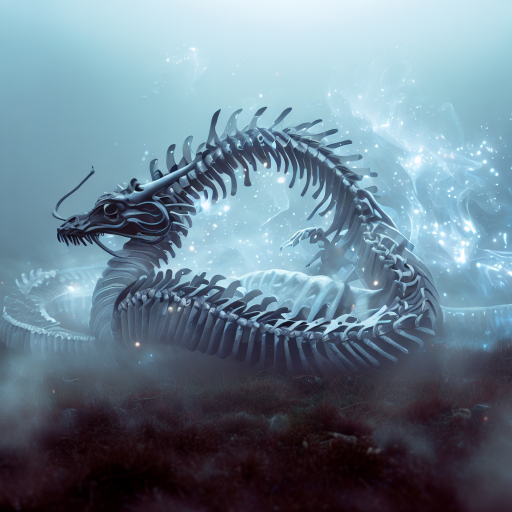The most distinctive feature of any frameslip drive is its ring. Unlike the simple vector-control core which can be tucked safely within the parent ship – the microtides accompanying too-close exposure to a vector-control core have been responsible for little more than a great deal of nausea among engineer apts – the much greater inflection of space required to form the frameslip envelope and the ripple on which it rides needs to be kept as far from the starship itself as practical. Since sensor domes, turrets, drive nozzles, radiators, et. al., protrude beyond the hull and must continue to operate during fittle-flight, a large slipspace volume is required, resulting in frameslip rings often being the most prominent feature of any starship equipped with one.
As frameslip travel has advanced, a variety of techniques have evolved to deal with the unfortunate form-factor this forces upon frameslip drive starships, and the problems inherent in having a large structure packed with relatively delicate metric-manipulation technology outermost in the starship’s structure, especially for warships.
Where the technology itself is concerned, the most important development was the multiphasic frameslip drive, enabling a single core to direct its output through dual or even multiple rings arranged in series along the drive axis. Rather than the spherical slipspace produced by an original-pattern frameslip drive, multiphasic frameslip encapsulates an ellipsoidal volume, more compatible with other aspects of celestime architecture, albeit at some cost in envelope efficiency. Such designs obviously reduce the necessary size of the frameslip rings for a given hull compared to a single-ring design.
Another area of development has been the use of temporary rings. The first systems of this type were simple temporary rings; a number of prototype vessels were constructed with dockable “collar” frameslip modules, similar in concept to the drive module of the Kalantha-class frontier trader. While this proved to be an unpopular paradigm, later developments along this line produced the Flatbread-class frameslip superlifter, which uses an open frame similar to a cageworks to surround the vessel it transports, and the Lanceola-class fleet carrier, a long-spined craft to which cruiser and destroyer-type screening vessels can dock within the radius of its frameslip rings.
Simultaneously, other designers were working on the collapsible frameslip ring, capable of being withdrawn from its active position to lie flat against the hull when not in use, a process requiring first disconnecting and then shrinking the individual segments of the ring. In achieving this, designers concentrated the frameslip machinery into a series of nodes at key points around the ring, permitting the remainder – primarily waveguides and simple couplers – to be mounted within telescoping structures extending from each side of the spar-mounted nodes and interlinking to complete the ring. This has now become the established standard for all but specialized and dedicated frameslip vessels; in more advanced designs, the extended nodes make use of reality graphics to form the full ring out of pseudomatter nanovoxels, eliminating the need for telescoping.
One particular example worth mentioning at this point is the Metamotive-class stargate transport, which hybridizes the above models. It makes use of a unique six-part design, the components of which are capable either of linking together and operating as a single unit while moving between gates, or of separating and docking independently with the transport sockets on a Ring Dynamics Mark IV stargate, extending the reach of the ring to cover the entire structure.
One of the greatest difficulties in ring design, however, was faced by the Imperial Navy’s Bureau of Innovation: that of enabling capital ships – battleships, carriers, and larger classes – to be constructed with frameslip capability. While collapsible frameslip rings, which place the key machinery safely within the protective envelope of the starship’s systems, suffice for civilian use, this is insufficient for a ship of war; the protection of armor is required for survivability in the battlespace environment. Thus, the Bureau developed the Alcarialé-Renaez frameslip mount.
Capital starship design is based upon a core framing structure within which the pressure hull (or hulls) is mounted, along with the drives, power reactors, bunkerage, auxiliary machinery, cargo holds, etc., etc. The outer hull, composed of armor plating, is mounted atop this framing structure by means of flexible spreader trusses; only a few necessary components are mounted to the inside of the outer hull.
The Alcarialé-Renaez frameslip mount separates the frame structure into multiple segments (typically three), along with the armor above it. The points where secondary structural members meet are connected when the segments are closed up using variations of the Ascíël coupler, while flexpipe, concertina couplings, and similar technologies are used to carry power, data, and materiel across the segments regardless of their position. Meanwhile, the junctions in the armor layers are built to a double-overlap pattern which provides protection when closed and do not allow for a vulnerable gap between armor sections. The primary structural members – selected to be sufficient for the stresses of fittle-flight, if not combat – at the division points are replaced by magnetohydraulic rams wrapped in similar variable-length couplers.
When such a vessel wishes to engage frameslip drive, it must first disengage the various couplers between each segment, at which point the multiple magnetohydraulic rams engage to drive the framing segments apart, lengthening the starship and opening gaps in the armor above the division points through which the spars and nodes of a collapsible frameslip ring may be extended, and the ring completed through reality graphic projection. On arrival, the same process is reversed to withdraw the ring and restore battle-readiness.
Of course, as all this is a somewhat complex and lengthy evolution, the frameslip-equipped capital ship must be sure to plan its arrival at a suitable distance from the battlespace, and likewise, may find itself unable to depart without a safe location in which to deploy the frameslip ring without exposing its vulnerable aspects to enemy fire.
– The Evolution of Frameslip (8001-8200), INI Press





